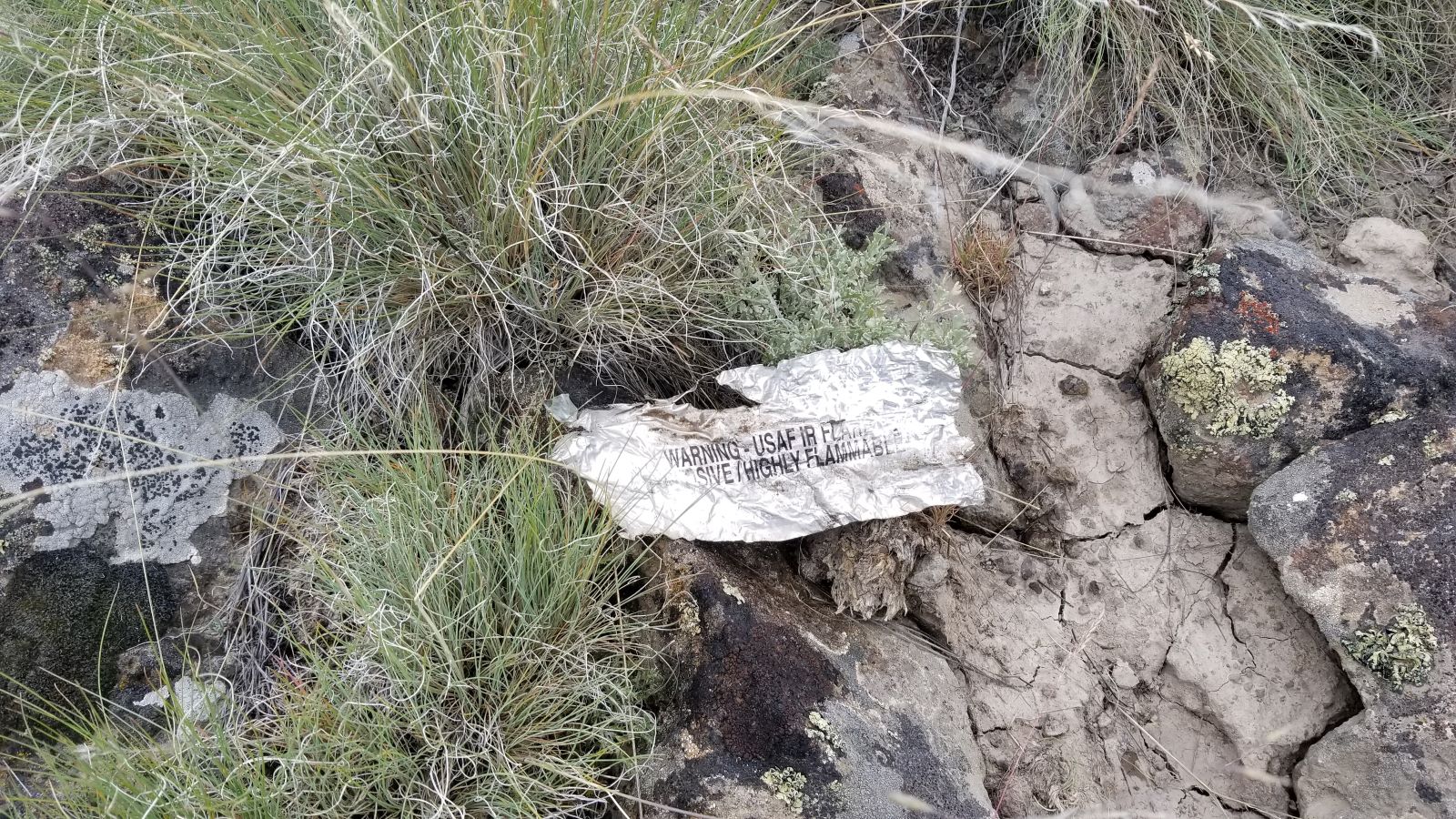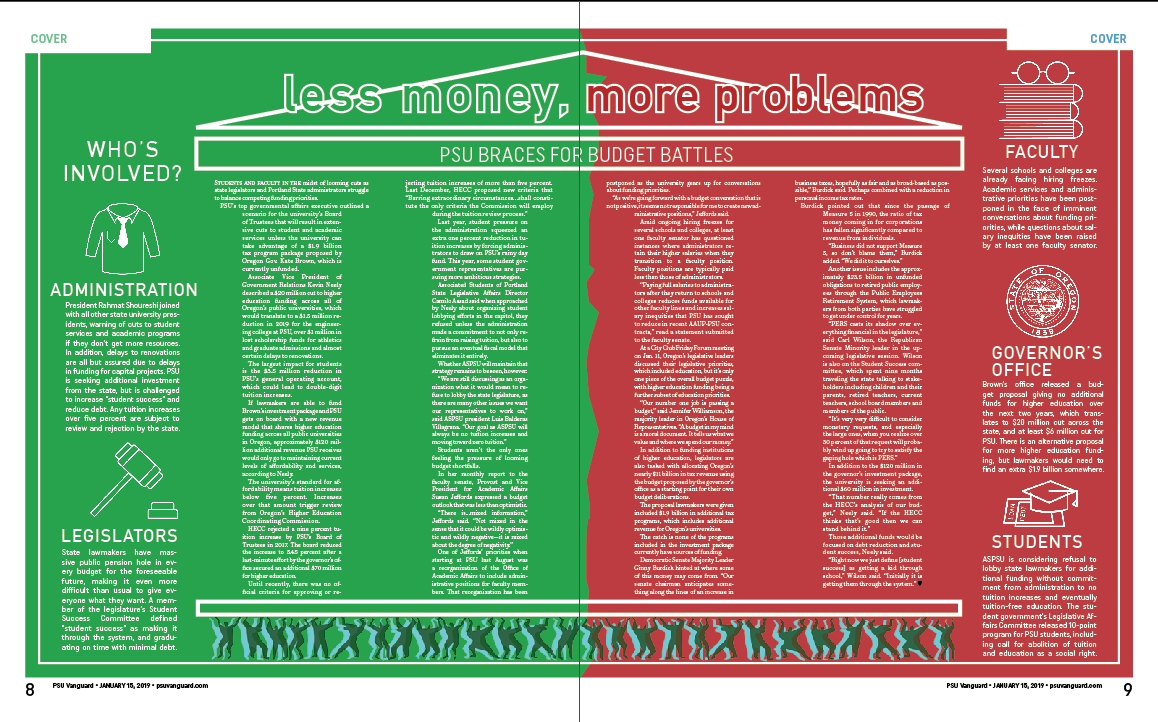Streetcar becomes a reality
For a few minutes, the procession of new streetcars out of the Portland State Urban Center stalled last Friday morning when one of the cars refused to move forward out of the Park Blocks.
The holdup prompted frantic beckoning from Mary Volm, information officer for the city’s Department of Transportation. Volm was acting as ringmaster for the parade of cars. Eventually the operator of the stalled car got his vehicle going again, and the parade moved on to the northwest end of the new line. A colorful cavalcade it became, headed by the gyrating dancers and drum thumpers of the Lions of Batucada samba band. A trio of white-suited Royal Rosarians marched on the heels of the band.
Just behind them streamed four of the five brightly colored streetcars in the current fleet, painted individually blue, green, orange and purple. Each was packed to the doors with first-time riders and decorated front and back with festive wreaths.
The advent of regular service for the new Portland streetcar was celebrated at two different ceremonies. The first kickoff came at 10 a.m. at PSU. Then the entourage of cars and lineup of speakers moved to the other end of the line at Northwest 22nd Avenue and Lovejoy Street, for a repeat of the launch.
An estimated 1,000 persons packed the Urban Plaza at the PSU kickoff session. City Commissioner Charlie Hales acted as master of ceremonies. With experience in the Department of Transportation, he has been instrumental in the project. He assured the crowd that despite the long lineup of speakers, each would be brief, and he kept his promise.
Hales told the throng, “This is a great idea created at the neighborhood level.” He said the line “makes us the best European city in America.” He paid special tribute to the 850 business and property owners along the route “who volunteered to tax themselves extra to pay for this community service.”
Both Hales and Mayor Vera Katz emphasized that the Portland State end of the line represents only a temporary terminus. They both visualized extending the line east to the Macadam area and eventually across the Willamette river. Retired U.S. Senator Mark Hatfield was introduced as the man “who paid for the ground floor” for the streetcar by shepherding federal funding. Hatfield saluted the streetcar’s connection to Portland State as enhancing the prospects for “bringing higher thoughts and higher standards for expanding our minds.” U.S. Congressman Earl Blumenauer, wearing a colorful bow tie, saluted the advisory committee which began working on the concept a decade ago. “We have another tool to go back and unlock the potential in our neighborhoods,” he said. He threw down the challenge of expanding the line, declaring, “On to Lake Oswego and any community willing to step up.” Alexandr Vondra, ambassador of the Czech republic to the United States, expressed satisfaction that Portland is the first U.S. city to order cars of Czech manufacture. He saw it as a revival of American interest in Czech manufacturing, and declared, “Our previously unwanted children are coming back home.” By 10:45 a.m., the speaking ended and the first car began loading passengers at Southwest Sixth Avenue and Mill Street, moving out at 11 a.m. The Urban Center Plaza remained heavily populated throughout the middle of the day. Especially favored with crowds was the PSU bookstore’s table for children’s arts and crafts activities. When the Darrell Grant Jazz All-Stars took the stage at noon, spectator seats and tables were well filled, and food concessionaires were busy. By supper time, the crowd had thinned out. Of the refreshment representatives, only Seattle’s Best Coffee remained. By then, some of the cars had experienced equipment problems and some doors were pasted with signs indicating the door was out of service. All along the line, crowds waited to board, and even standing space continued to be a squeeze. The streetcar will operate every day. The original predicted interval time was 12 minutes but field tests pushed that back to every 13 minutes. Fares will be the same as Tri-Met but most of the route will fall within fareless square, which extends to Northwest Irving Street.The route extends to Northwest 23rd Avenue. The cars have one inconvenience for paying fares; the fare boxes will not accept bills, only coins. Operators are Tri-Met drivers. The streetcar will not load passengers at its southern terminus point, Fourth Avenue and Montgomery Street. The first outgoing load point is at Sixth and Mill, in the plaza. There are two streetcar stops in the Park Blocks, on Market and Mill Streets and one just off-campus at 10th Avenue and Clay Street. On the incoming leg of the route, the streetcar stops on Fifth Avenue at both Market Street and Montgomery Street. The information phone number for the streetcar is 503-238-RIDE.



